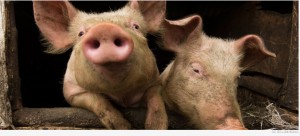In the wake of the 2nd Cork Declaration on Rural Development, Thomas Quinn weighs up the chronic imbalances of the EU’s Common Agricultural Policy (CAP).
There is an old saying in Ireland that ‘Dublin is, and Cork shall be’ – a playful reminder to big cities of all that the countryside has to offer. This very aptly captures the good intentions of the recent ‘Cork Conference on Rural Development’ (5-6 September). Here, EU Agriculture Commissioner Phil Hogan assembled the great and the good of Europe’s agriculture stakeholders – from farming unions and ‘big food’ business to environmental NGOs – on his home turf. The some 300 attendees were invited to “take stock, to analyse and to develop a common vision for the future of European agriculture and rural communities”.[1]
This call was both well-timed and well-situated, coming exactly twenty years after the landmark (first) Cork Declaration on Rural Development, entitled ‘A Living Countryside’. Keen to profit from the very positive memories, the organizers enthusiastically styled this outing with the potboiler title of ‘Cork 2.0’. But, as is so often the case with hyped-up sequels, the new declaration ‘A Better Life in Rural Areas’ struggles to live up to the dynamism of the original.
On the surface, there was much to admire. There was a commendable new emphasis on broad spectrum consultation; as Commissioner Hogan stated in his opening speech “this is your conference, I want to hear what you have to say”.[2] And the declaration itself undoubtedly has some welcome parts: there is a focus on climate action as well as protecting biodiversity and our precious natural resources, such as air and water.
Yet, BirdLife partners from Ireland, Spain and Belgium – who came hoping to hear about much-needed reform of the Common Agricultural Policy (CAP) – found the progress bittersweet. Much of the content bears the hallmarks of ‘business as usual’. For one, it fails to tackle the issue that increasing levels of farmland intensification driving biodiversity to the brink. Moreover, these new proposals will be all but nullified within the larger broken structure of the CAP – a policy which has hemorrhaged credibility since the last reform failed to go ‘green’. Indeed, the CAP, as it currently stands, works in many ways against these new objectives.
This all comes down to the lopsided nature of the CAP’s so-called ‘Two Pillar’ structure: ‘Direct Payments’ to farmers eat up ~75% of the budget, while funds for ‘Rural Development’ get only ~25%. The result is a vicious circle and a pointless waste of public money: Pillar I funds are spent on undermining our natural resources and decreasing rural jobs, while Pillar II funds attempt to ‘revitalize’ rural economies and restore ecosystems. It’s a maddening case of sending good money after bad.
During the closing session, Dr. Franz Fischler (former EU Commissioner and the architect of the first Cork Declaration) seized the opportunity to call for an end to this two-pillar system. If the Commission would like the 2nd Cork Declaration to be more than just ‘lipstick on a pig’, then it would be very wise to heed Dr. Fischler’s sage advice.
To read the full Cork 2.0 Declaration 2016, see ec.europa.eu/agriculture/events/2016/rural-development/cork-declaration-2-0_en.pdf
For BirdLife and EEB joint-statement on the declaration, see www.birdlife.org/sites/default/files/attachments/birdlife_europe_eeb_press_statement_07_09_2016.pdf#overlay-context=europe-and-central-asia/birdlife-europe-press-releases
Notes:
[1] Opening Speech by Commission Phil Hogan at Cork 2.0 Conference on Rural Development, September 5th 2016, Cork, Ireland.
[2] Opening Speech by Commission Phil Hogan at Cork 2.0 Conference on Rural Development, September 5th 2016, Cork, Ireland.
Thomas Quinn is BirdLife Europe and Central Asia’s EU Agriculture Policy Officer.
Originally published by Birdlife on Oct. 6, 2016 at www.birdlife.org/europe-and-central-asia/news/lipstick-pig-2nd-cork-declaration-rural-development



No comments yet, add your own below